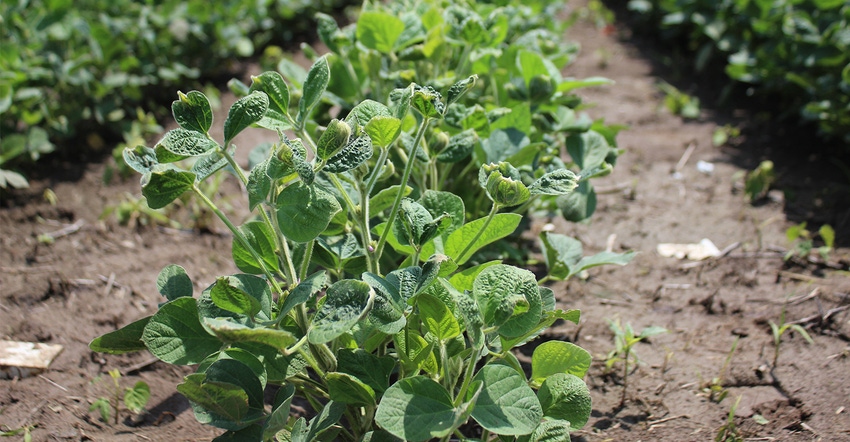July 21, 2017

“Who needs Extension anyway? I get all my information from my seed dealer/chemical retailer/fertilizer dealer/fill-in-the-blank.”
That was the question in 2010, when Illinois budget cuts gutted Extension. We may have gotten the answer in 2017.
Surging reports from field and internet over the past couple of weeks have revealed soybeans showing symptoms of exposure to dicamba. As of July 20, the Illinois Department of Agriculture had received 87 formal misuse complaints. As University of Illinois weed scientist Aaron Hager says in this fantastic summary, “To estimate the extent of this using the number of complaints filed with IDOA would be to grossly underestimate the current reality.”
The current reality? A hard story with a lot of sides that’s moving quickly.
You’ve got farmers who say they applied dicamba according to the label and still, it moved. You’ve got farmers who never planted a single RR Xtend bean, yet have damage across hundreds of acres. You’ve got retailers who say they followed all the labels, and still it moved. You’ve also got retailers who’ve made internal, voluntary decisions to cease sale and use of dicamba products at this point.
You’ve got agronomists who’ve relentlessly evaluated fields and say there’s a real problem out there. You’ve got companies with a multimillion-dollar investment and a product to protect that speculate it’s off-label use or maybe it’s the nozzle (or as Hager says, it’s everything but the Russians).
You’ve got university researchers, like Hager, who’ve been talking about this possibility for months, telling Prairie Farmer last spring, “low volatility doesn’t mean no volatility,” and who relentlessly look to research to explain inversions and yield loss. And you’ve got farmers with real weed-resistance battles to fight who say they’ve used it on every soybean acre, it worked beautifully, and their neighbors’ beans are healthy, too.
Researching independence
All these things are true. And in the world of dicamba, they can all be true at the same time. It can both work perfectly and be a disaster.
But people are angry. I’ve heard stories already of Illinois farmers nearly coming to blows. Last year, a Missouri farm manager shot an Arkansas farmer over dicamba injury. And for the first time in my career, I’ve heard Extension professionals and independent agronomists sharply and publicly criticize industry personnel for what they believe are misleading and unprofessional statements. Hager’s aforementioned piece outlines and refutes some of the more outlandish statements he’s heard.
In my mind, this is case in point why we need both Extension professionals and independent agronomists. They are independent for a reason. They’re not trying to sell you a product. They’re not trying to protect a product. They’d love to have researched in-season dicamba and vapor technology and done field trials before we got to this point.
Frankly, retailers need Extension, too. As claims inevitably roll in on dicamba injury, insurance companies will take a hard look; one retailer reports its agent says whether it was volatilization or drift, insurance would treat it as drift. The likely upshot? Higher premiums for the retailer, who has to carry insurance as a commercial applicator.
We need everyone — product developers, company agronomists, Extension, independent agronomists — working together to test, research and share information. We need the ability to look at an independent research farm and see what happens.
And this is why, as a state, we need to fund university-based research and state Extension specialists. It’s why we needed C-FAR, why we need to push for agricultural production research, and why it needs to be publicly funded. Could we have avoided some of these problems if Extension scientists had been allowed to independently test new dicamba formulations — prior to release — and publish their findings?
Who needs Extension anyway? Maybe we do.
Comments? Email [email protected].
You May Also Like




